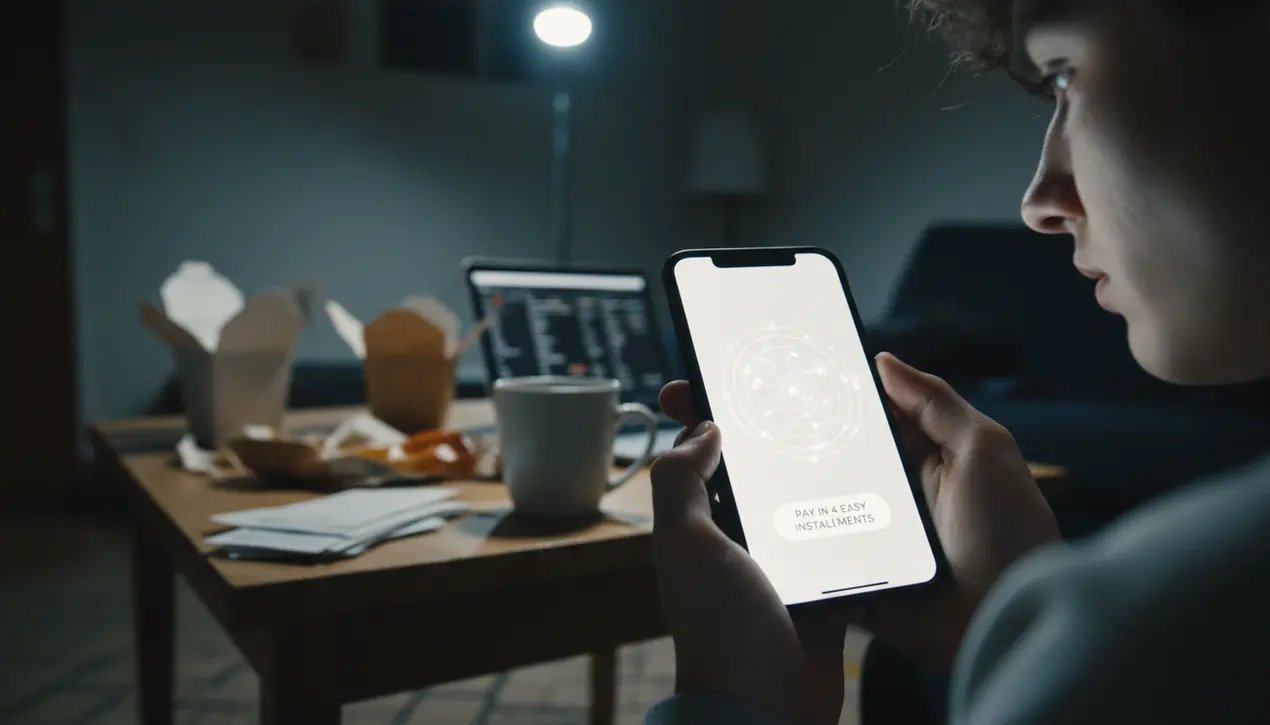
Financefintech & paymentsBuy Now Pay Later
Buy now, pay later is more dangerous than ever.
ET
Ethan Brown
2 days ago7 min read4 comments
The other day, I went to buy my first big Christmas gift of the year, and there it was, on the checkout page: Would I like to split this purchase up into four easy interest-free payments? It’s a compelling offer, the kind of financial psychology that makes you feel smart for spending money you don't have. Parting with a smaller amount of cash to get something you want sooner is a powerful lure, so powerful that half of all U.S. shoppers plan to use so-called 'buy now, pay later' (BNPL) services for their holiday shopping this year, according to a PayPal survey.Dig deeper, and the numbers get more concerning: one in four millennials and Gen Z-ers use payment options like Affirm and Klarna regularly. These are the same young adults navigating a brutal job market, struggling with overdue student loan payments, and grappling with persistently high food prices.It felt like a particularly dark turn when DoorDash announced a partnership with Klarna earlier this year, effectively ushering in an era where people are taking out microloans to pay for takeout. As affordability solidifies as the dominant issue in American politics, this holiday season feels different.Everything is more expensive, yes, but with BNPL options now offered by everyone from fintech startups to major banks, it's also easier than ever to finance a lifestyle you simply can't afford. The guardrails are coming off, too.The Trump administration has rescinded a Biden-era rule that would have treated BNPL lenders more like credit card companies, leaving consumers more vulnerable to unexpected fees and a spiral of debt. Some analysts are even warning that the precarious situation is starting to look unsettlingly similar to the early days of the subprime mortgage crisis that triggered the Great Recession.'BNPL lenders are not currently required to determine whether consumers can afford their BNPL loans,' explained Nadine Chabrier, senior policy and litigation counsel at the Center for Responsible Lending. 'There are currently no checks and balances on borrowers taking out multiple BNPL loans at the same time, which may lead to overextension.' If you’ve seen *The Big Short*, this sounds like a familiar, terrifying script. But before we get carried away with predictions of systemic collapse, let's break down how these deceptively simple loans actually work.In the industry's early days, you'd mostly encounter BNPL on e-commerce sites selling luxury goods or electronics. The option to pay in installments, often with zero interest, was a powerful conversion tool for retailers, who happily adopted the feature.Lenders made their money by taking a small cut from the merchant and charging consumers late fees. Venture-backed fintech startups like Affirm and Klarna led the charge, but the pandemic supercharged the industry into the mainstream.The dollar amount borrowed skyrocketed from $16. 8 million in 2019 to $180 million in 2022, according to a Consumer Financial Protection Bureau report, with the average loan sitting at a seemingly manageable $135.The core problem, as Chabrier pointed out, is the lack of underwriting. BNPL lenders typically don't perform hard credit checks to see if you can afford the loan, and it's remarkably easy to take out several at once—a practice known as 'loan stacking.' This explains why late payments are becoming endemic. More than 40 percent of BNPL users admit to making a late payment in the last year, up from 34 percent the year before, according to a Lending Tree survey.Meanwhile, over 20 percent say they've had three or more loans active simultaneously, and a sobering quarter of respondents have taken out a BNPL loan just to buy groceries. This is a critical moment to highlight that not all these loans are interest-free.Both Affirm and Klarna state their APRs can soar as high as 36 percent. While that's far lower than the predatory rates of payday loans, it's a world away from the zero percent promise that hooks most users.The regulatory landscape is a patchwork of uncertainty. Until recently, most BNPL loans weren't reported to credit bureaus, creating a massive blind spot in the financial system.The rescinded CFPB rule would have brought much-needed transparency, but its withdrawal has left the industry largely unregulated at the federal level. Meanwhile, all this consumer debt is being packaged and sold, echoing the financial engineering of the mid-2000s.Elliott Investment Management just inked a deal to buy up to $6. 5 billion worth of debt from Klarna, and Affirm had sold nearly $12 billion in securitized debt as of June.In a recent TechCrunch piece, Connie Loizos described the process in bleak terms: 'Slice up risky consumer debt, sell it to investors who believe they understand the risk profile, and create layers of financial engineering that obscure where the actual exposure lies. ' It’s a chilling parallel to the subprime mortgage playbook.However, it might be premature to declare a full-blown crisis. 'While it’s possible, we do not know enough about the scope of BNPL borrowing to say such a thing,' Chabrier told me.On an individual level, though, the danger is clear and present. The industry has built a delirious new culture of consumption, trapping users in a vortex of debt, as detailed in a recent New York Times Magazine feature on shoppers who missed the fine print and found themselves in serious financial trouble.As this holiday shopping season kicks into high gear, my advice is simple, the kind of personal finance coaching I always emphasize: read the fine print. Understand the true cost.Or better yet, exercise the ultimate financial discipline—don't buy now and don't pay later. Your personal balance sheet, and potentially the broader U.S. economy, will thank you for it.
#buy now pay later
#BNPL
#consumer debt
#regulation
#financial risk
#personal finance
#featured
Stay Informed. Act Smarter.
Get weekly highlights, major headlines, and expert insights — then put your knowledge to work in our live prediction markets.
Comments
Loading comments...
© 2025 Outpoll Service LTD. All rights reserved.